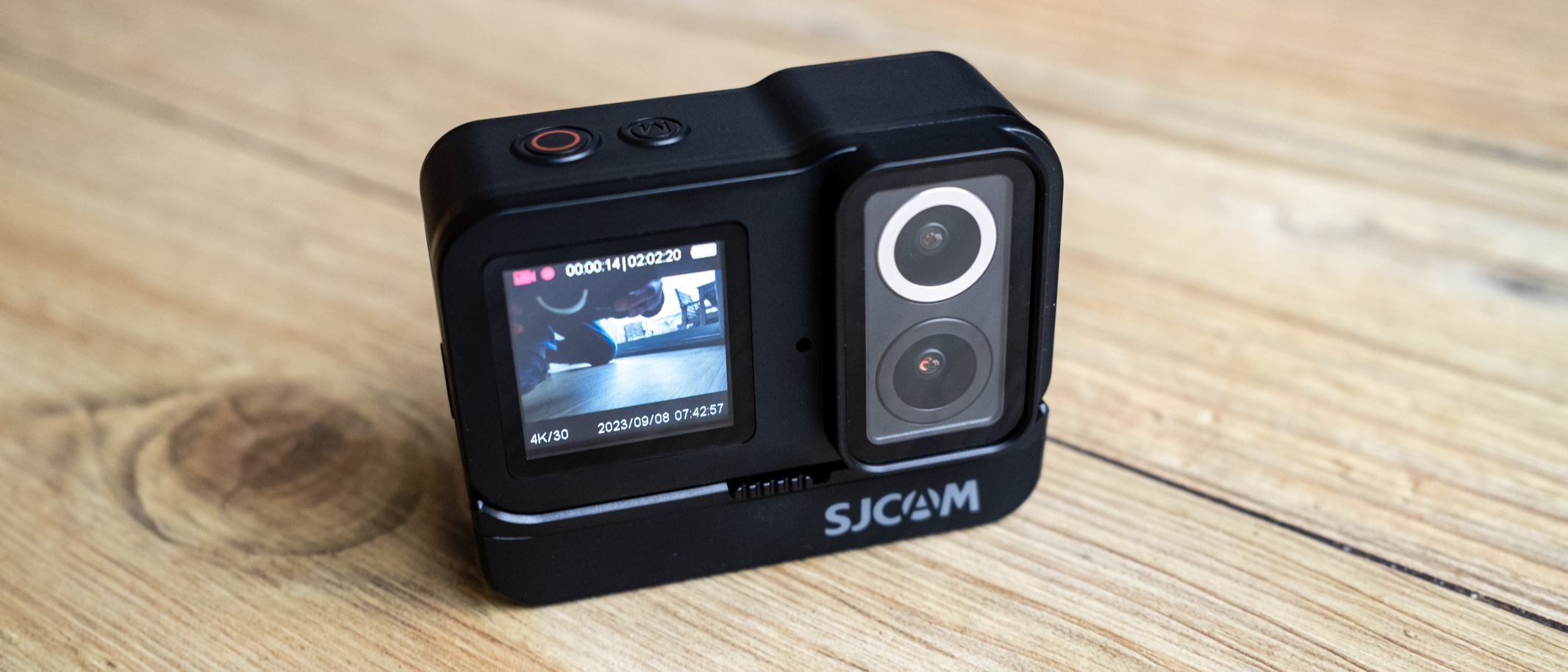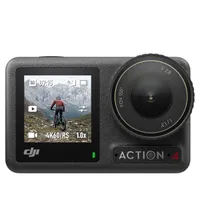TechRadar Verdict
Thanks to its two cameras designed for use in daylight and at night, the SJCAM SJ20 Dual Lens Action Camera is an intriguing option. It also has most features people will want in an action camera and a budget price tag too. Sadly, the SJ20 does not live up to the hype. Its build quality doesn't compare with market-leading action cameras, while image quality, for video especially, isn’t great when shooting either in daylight or at night. Back to the drawing board.
Pros
- +
Cost-effective complete kit
- +
Internal and external batteries
- +
Day and night cameras
Cons
- -
Video quality isn’t great
- -
Limited exposure control
- -
Average build quality
Why you can trust TechRadar
Two-minute review
With some bold claims under its belt, the SJCAM SJ20 Dual Lens Action is the world’s first action camera to provide two cameras and lenses: one for daylight shooting and a second for night capture. It may or may not fall into the best cheap action cameras category, but it’s undoubtedly an interesting concept, and there's compelling video footage comparing the night video capabilities against the GoPro Hero 12 on the SJCAM website that suggest it has GoPro-beating night vision. Are the claims true, or just marketing hype?
Sensor: N/A
FOV: 154 degrees
Max photo resolution: 5888 x 3312
Video: Up to 4K 30fps (16:9)
Stabilization: 6-axis gyroscope
Front screen: 1.3-inch
Rear screen: 2.29-inch
Battery: Built-in 800mAh / External 1050mAh
The SJ20 provides the usual shooting modes found on action cameras, with a handful of extras thrown in for good measure. Video capture is possible up to 4K at 30fps, with lower resolutions offering higher frame rates, while stills can be captured at 20MP, which is impressive for an action camera. So, again, pretty much standard except for photo resolution, but higher-end action cameras typically offer a greater number of video capture options at 4K, alongside higher frame rates.
Shooting modes aside, the SJ20 is unmistakably a budget action camera, somewhat in the mold of the pricier Insta360 One R, albeit with two cameras and lenses, each with its own sensor, rather than one interchangeable lens module. Like that camera, the SJ20 uses a clip-on external battery alongside an internal battery, with the main difference being the SJ20's handy 1.3-inch front screen, which complements the rear 2.29-inch touchscreen.
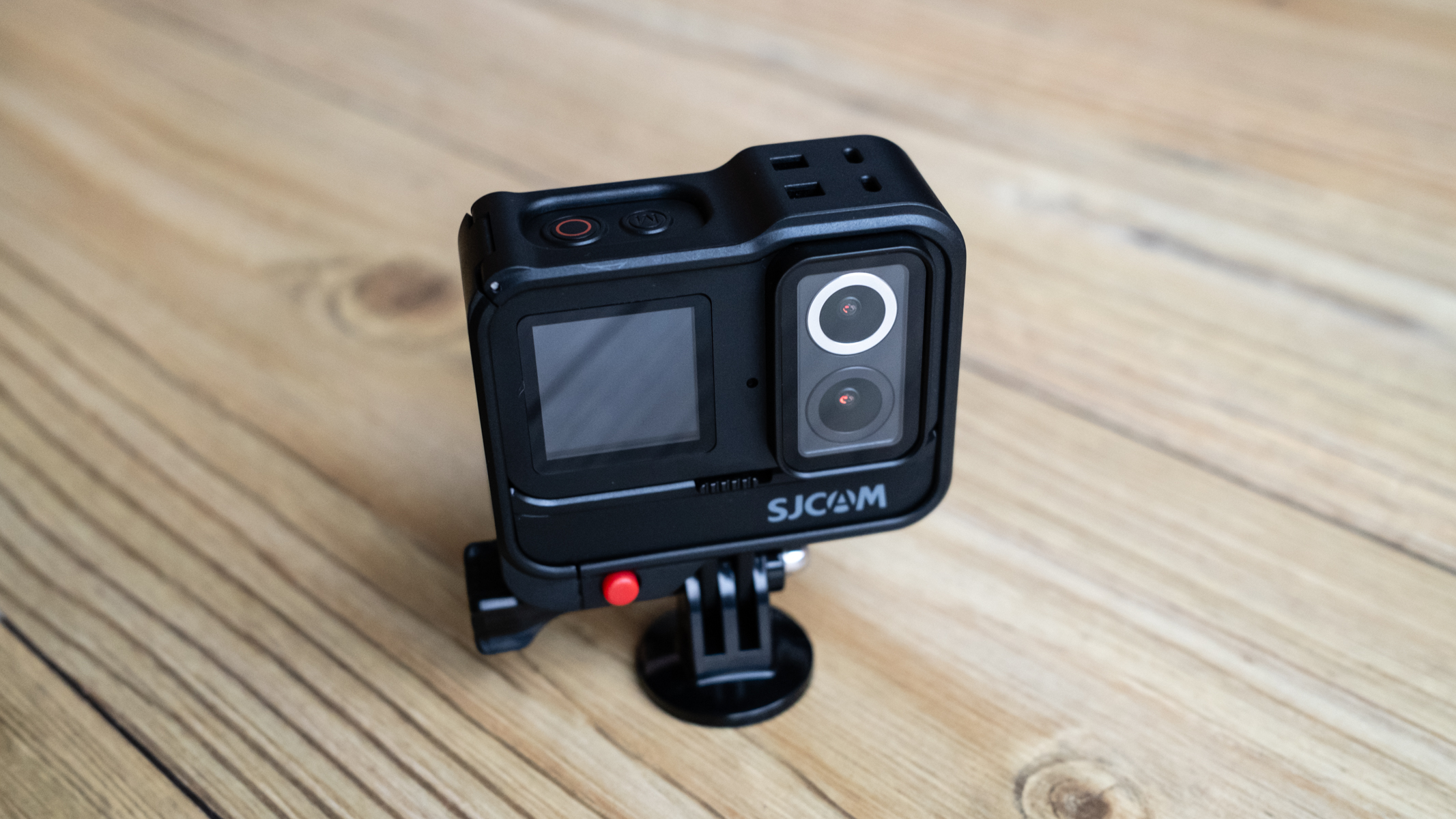
SJCAM SJ20: release date and price
- Two kit options are available
- Kits include multiple accessories
- Available January 2024
The SJ20 was announced in November 2023, and has been available to purchase from the SJCAM website since January 2024. There are two kits available – we tested the Standard option, which includes the SJ20, a 1050mAh external battery, a dive housing, multiple attachments, a small frame to use the camera without the external battery, and a larger frame for use with the external battery. The Pro Kit also includes a 5650mAh battery grip to further extend shooting times.
Despite the SJCAM website suggesting that the SJ20 can be purchased in multiple currencies, it’s only available in US dollars with the Standard kit coming in at $229 and the Pro Kit at $249. At the time of writing, this converts to around £180 / AU$350 for the Standard Kit, and £200 / AU$380 for the Pro Kit. For what you get in the kits this is competitive pricing, and opens the camera up to a wider audience, including individuals with a smaller budget.
- Price score: 3/5
SJCAM SJ20: design
- External battery increases shooting time
- Heavily inspired by the Insta360 One RS
- Frames and dive housing provide water resistance
In terms of design, the SJ20 looks extremely similar to the Insta360 One R and One RS action cameras, to the point that it’s almost a clone. The main difference, aside from build quality, is that the SJ20 features a 1.3-inch front screen for use when filming yourself, as well as a 2.29-inch touchscreen on the rear via which you can access settings. There are just two buttons on the top: one to change between the day and night cameras, and a record/shutter button that doubles up as the power button.
There’s a built-in speaker plus a door panel that covers the microSD card slot and the USB-C charging port. Annoyingly, the external battery has to be removed to open this door and then reattached for charging, and the process followed in reverse once charging has completed. It’s not the end of the world by any stretch, but it’s one of those design elements that could have been better thought through.
Sign up for breaking news, reviews, opinion, top tech deals, and more.
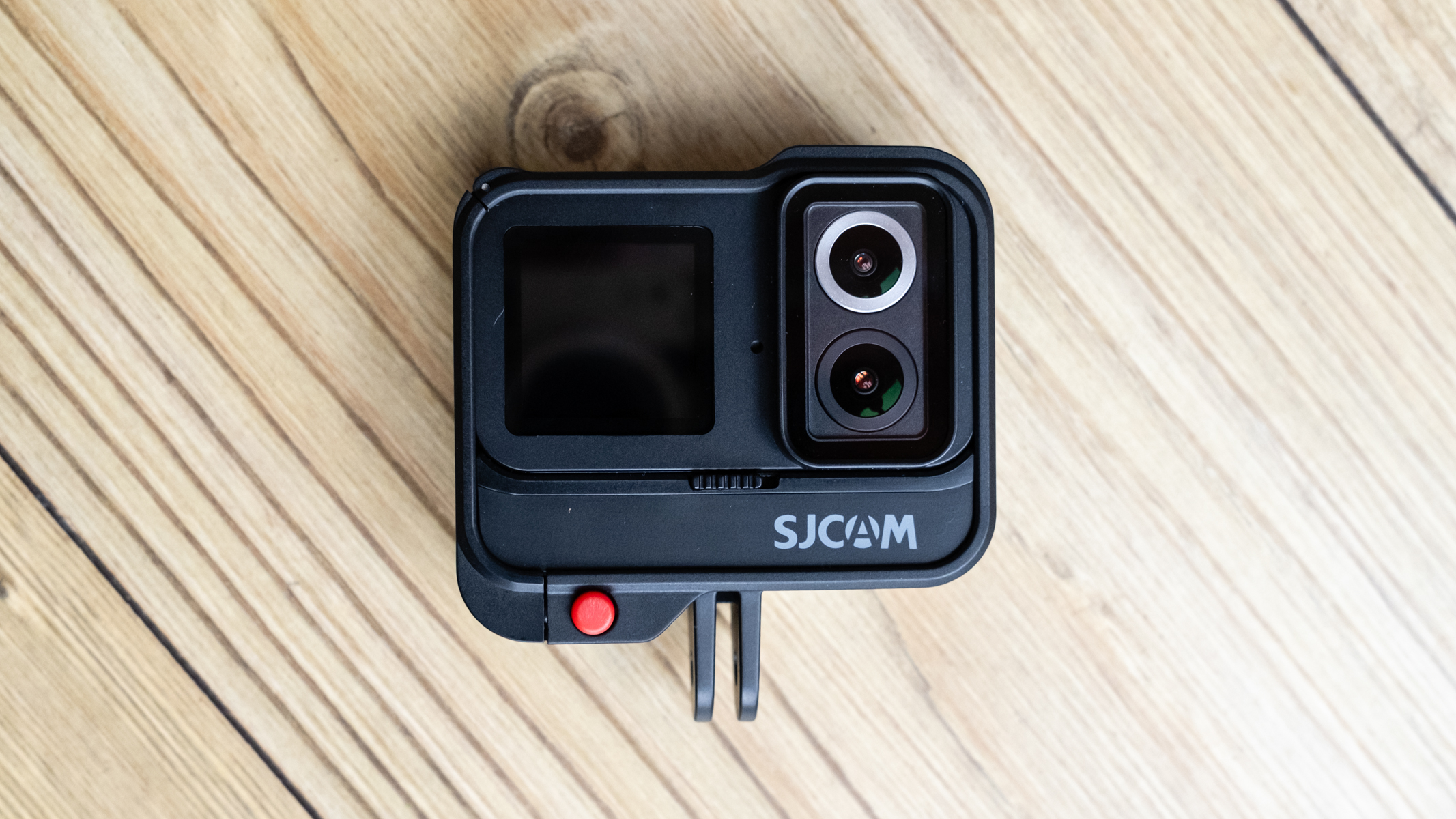

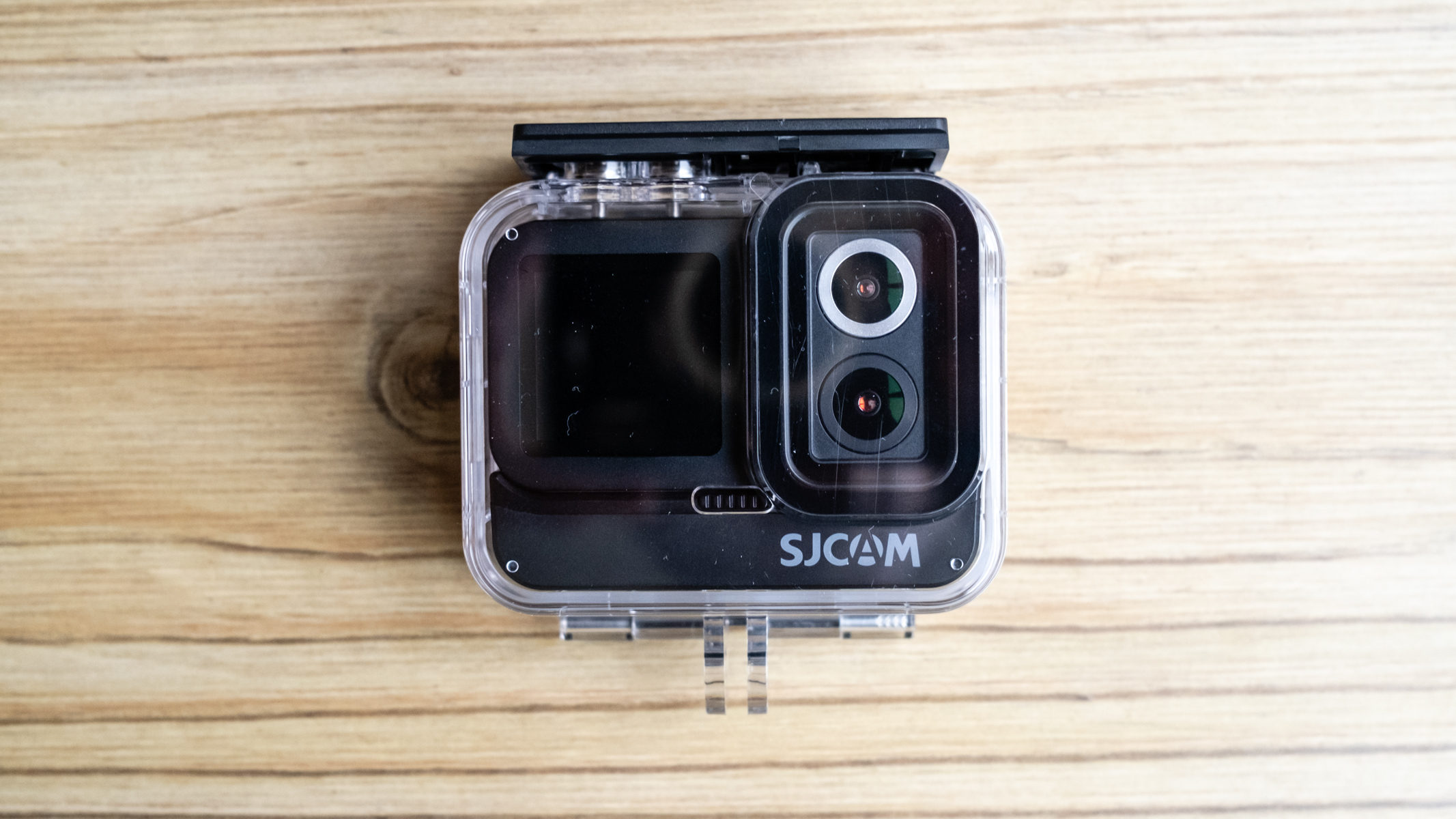


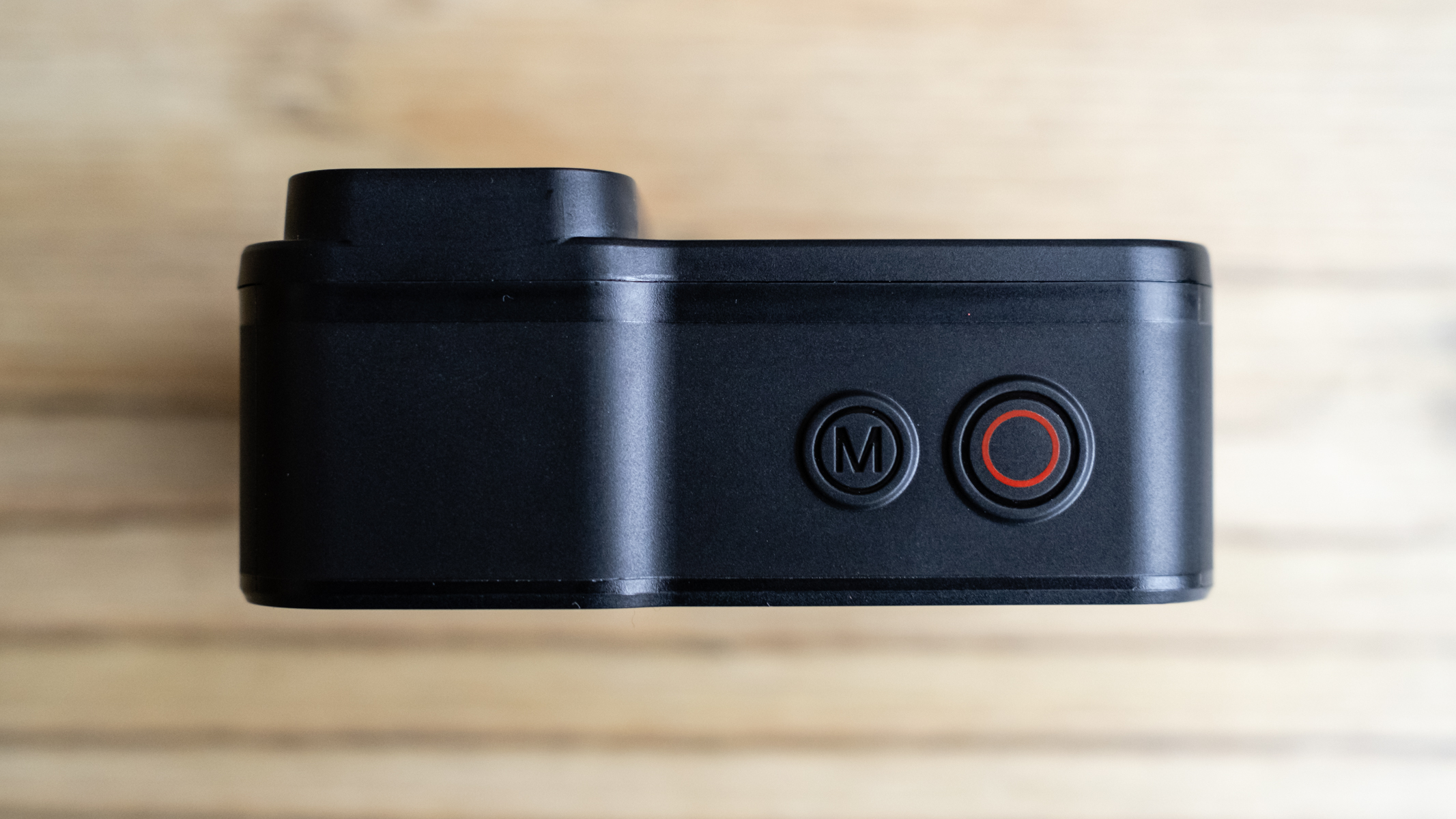

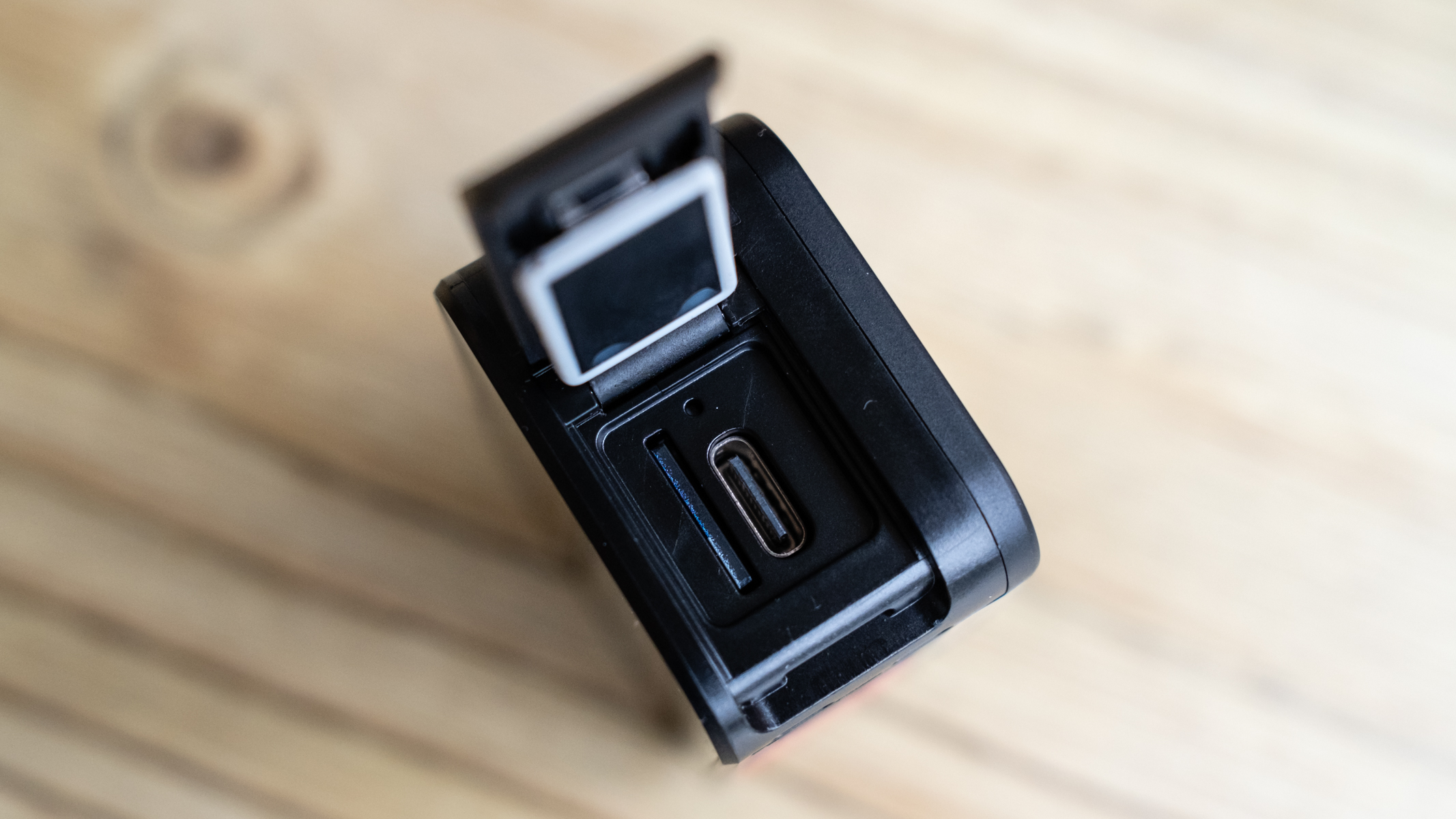
The SJ20 features a built-in 800mAh battery, and also an external 1050mAh battery that clips onto the bottom, just like the Insta360 One R. Battery life is reasonable, but never gets close to the maximum of three hours that’s suggested when capturing 4K video. Whether you're using the camera with its internal battery or with the external clip-on battery, the kit includes two frame configurations that wrap around the camera to provide water resistance to 5m / 16ft while the dive housing extends this to 40m / 130ft.
Build quality is average, and certainly not outstanding – the camera does feel a little cheap, and doesn’t offer the premium feel and smooth operation of the Insta360 cameras it’s so clearly inspired by. But this is unsurprising considering the much lower cost of the SJ20, and the fact that Insta360 is a premium action camera manufacturer alongside DJI and GoPro, with all three brands occupying the upper end of the market.
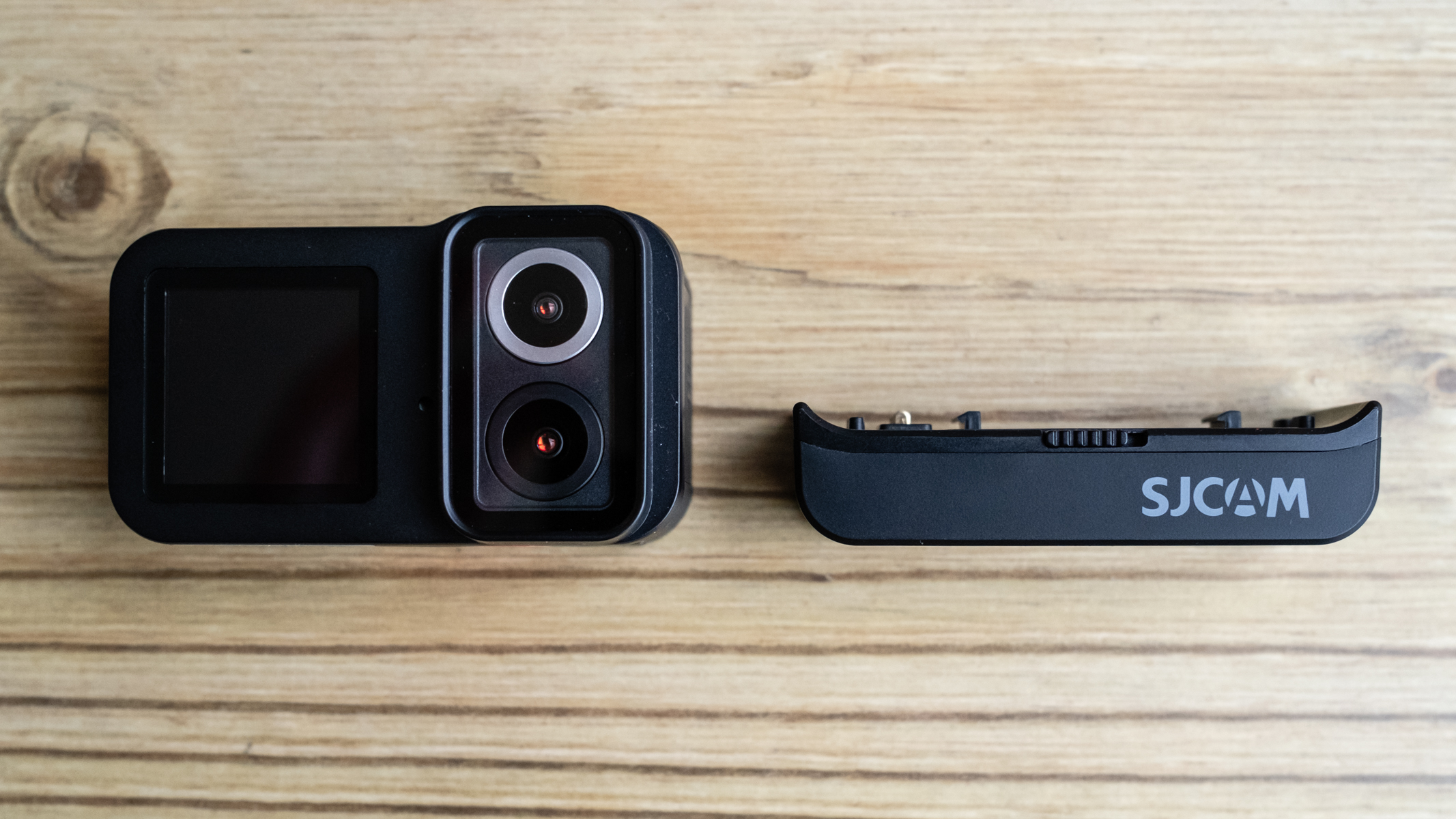
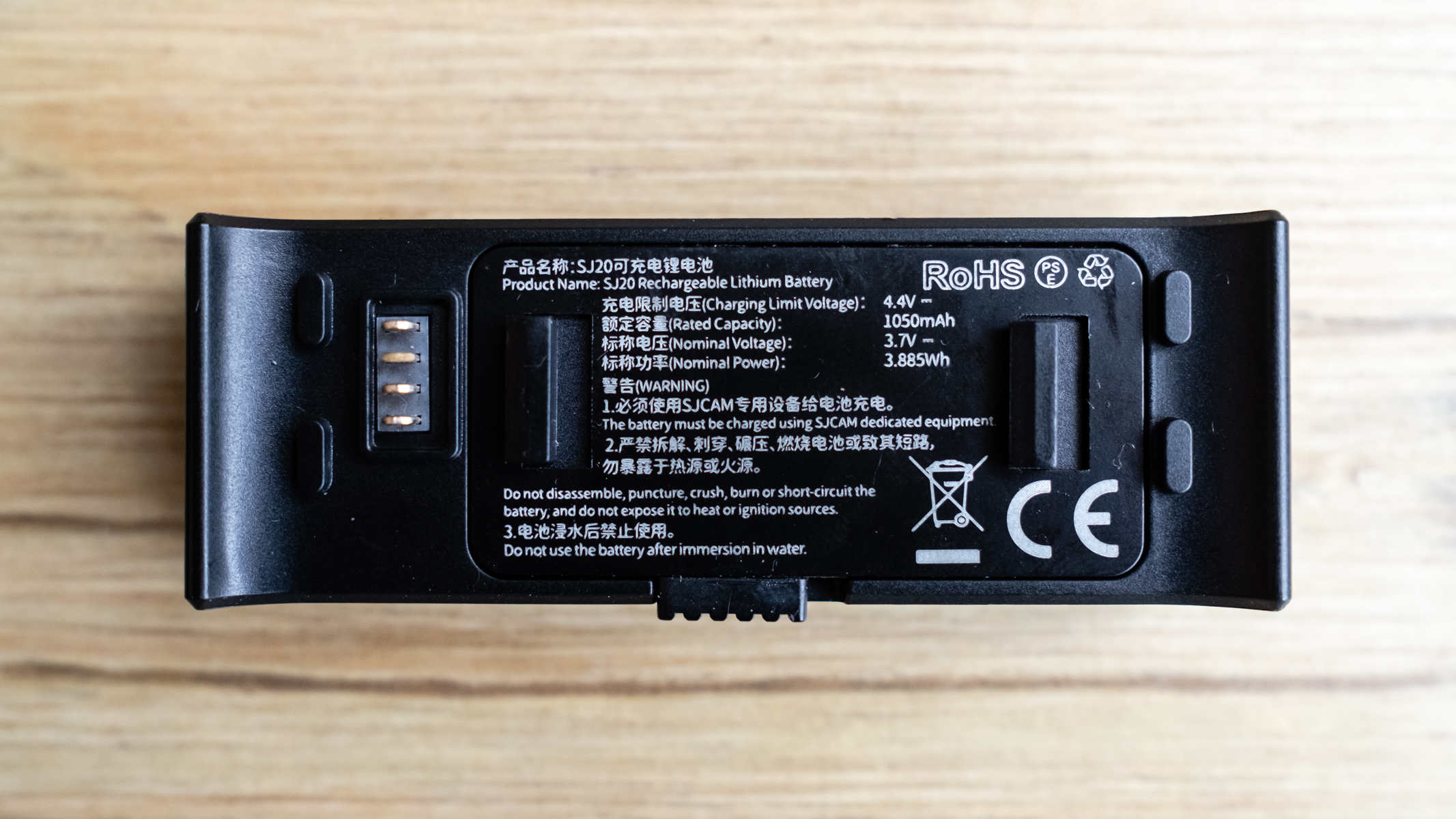
- Design score: 2.5/5
SJCAM SJ20: features and performance
- Multiple shooting modes
- 6-axis gyroscope stabilization
- Easy to use
Most action cameras these days are incredibly easy to use, and the SJ20 is no exception. But where the higher-quality action cameras typically rely on swipes from the edges of the LCD screen to access settings, the SJ20 uses on-screen buttons to access settings and menus, with just one edge swipe from the top of the screen to access a handful of settings. This gives the user interface a slightly dated look and feel, but it doesn’t impact negatively on the user experience.
The 2.29-inch rear touchscreen provides a clear image for navigating menus and composing photos and videos. It’s nice and responsive, but it can sometimes take a press or two to access settings or menus if you use the edge of your fingertip – something you often find yourself doing when holding the camera with both hands. The 1.3-inch front screen is great when you're capturing yourself, but this has no touch functionality, so you have to set everything up on the rear screen before switching between the two, because only one screen works at a time.
There’s no shortage of shooting modes alongside standard photo and video capture. You get everything you’d expect from an action camera, such as slow motion, pre-recording, timelapse and motion detection, among others. There are also livestream and webcam modes, alongside interval and continuous shooting for photos.
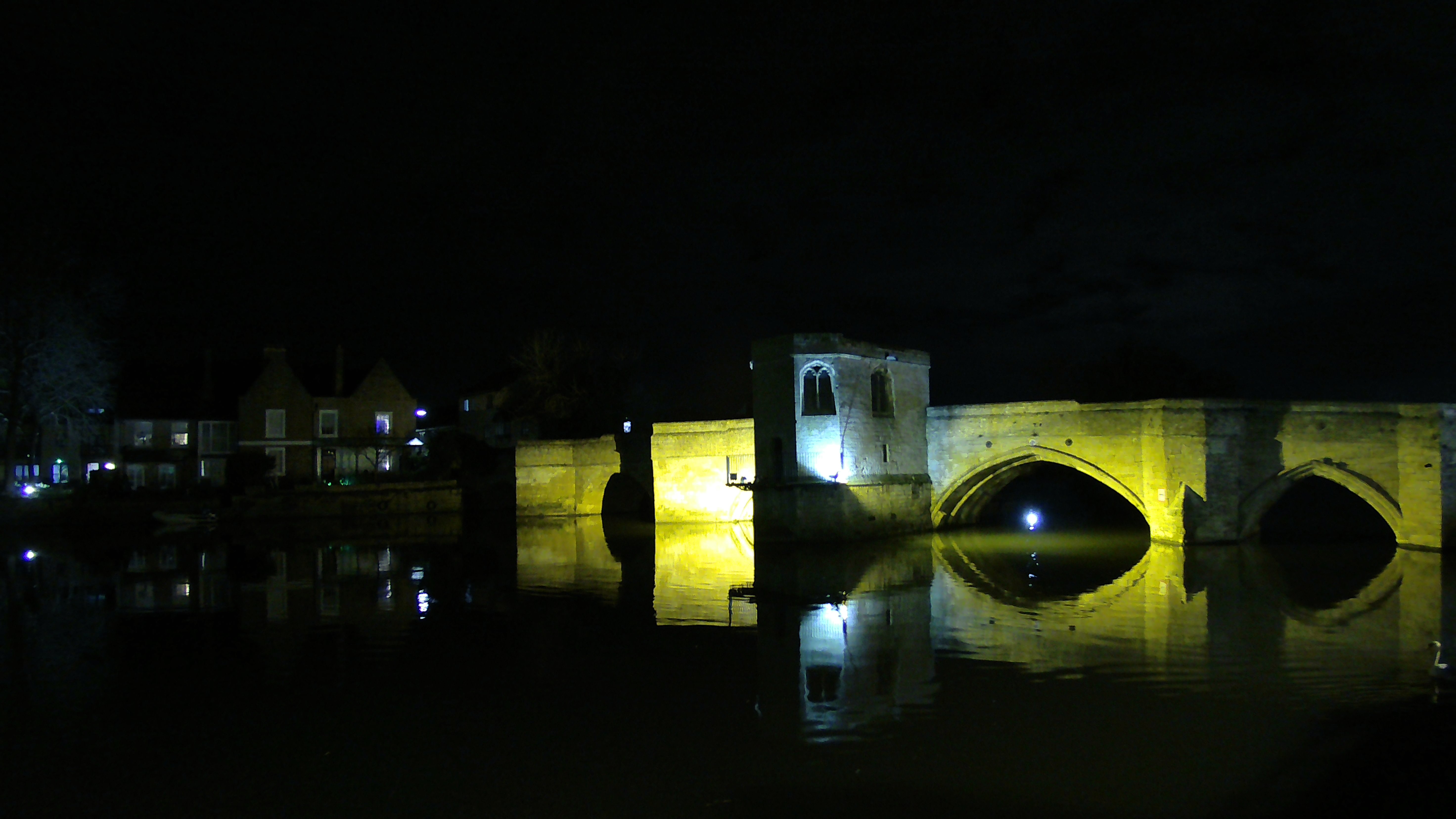
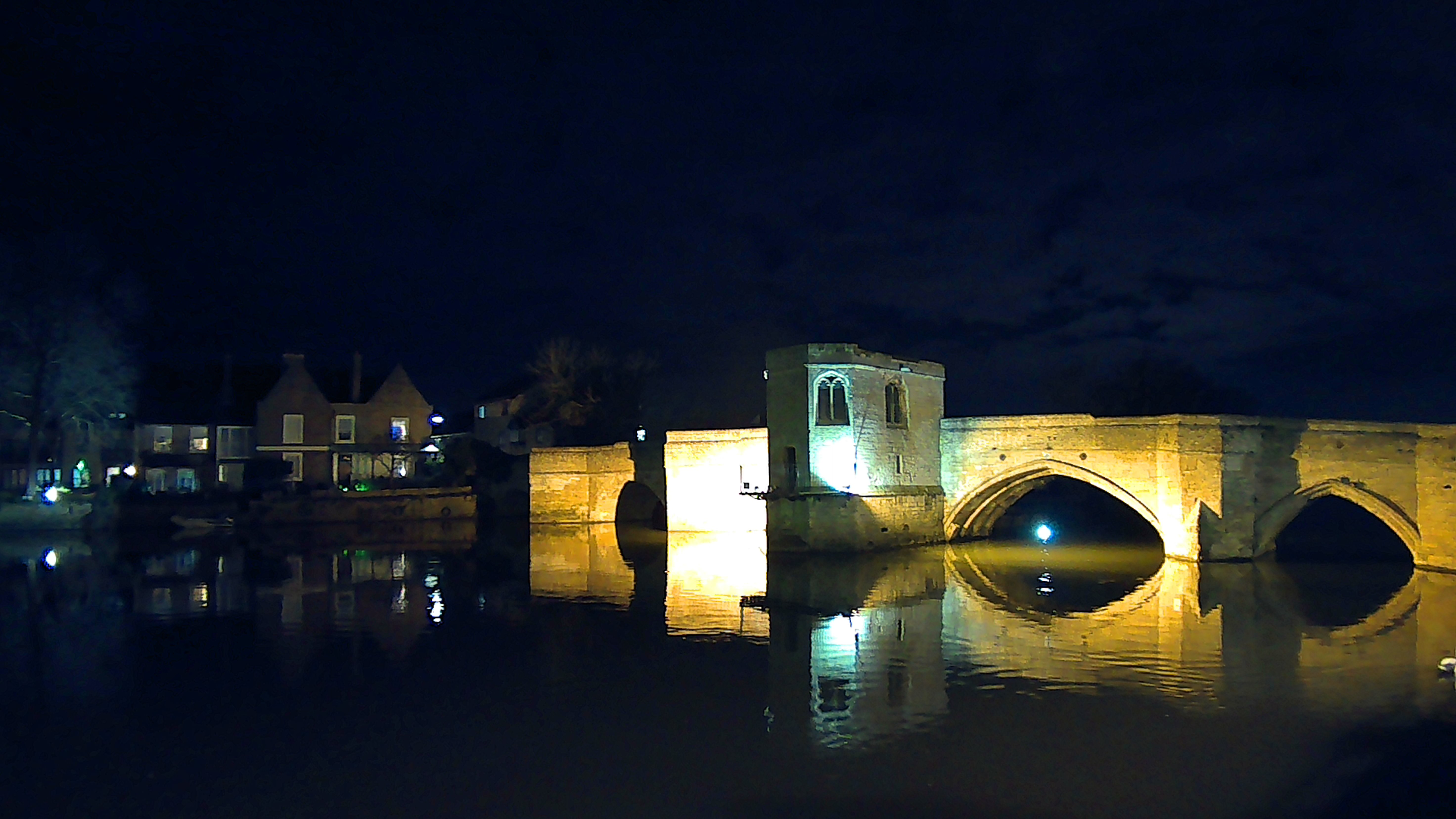
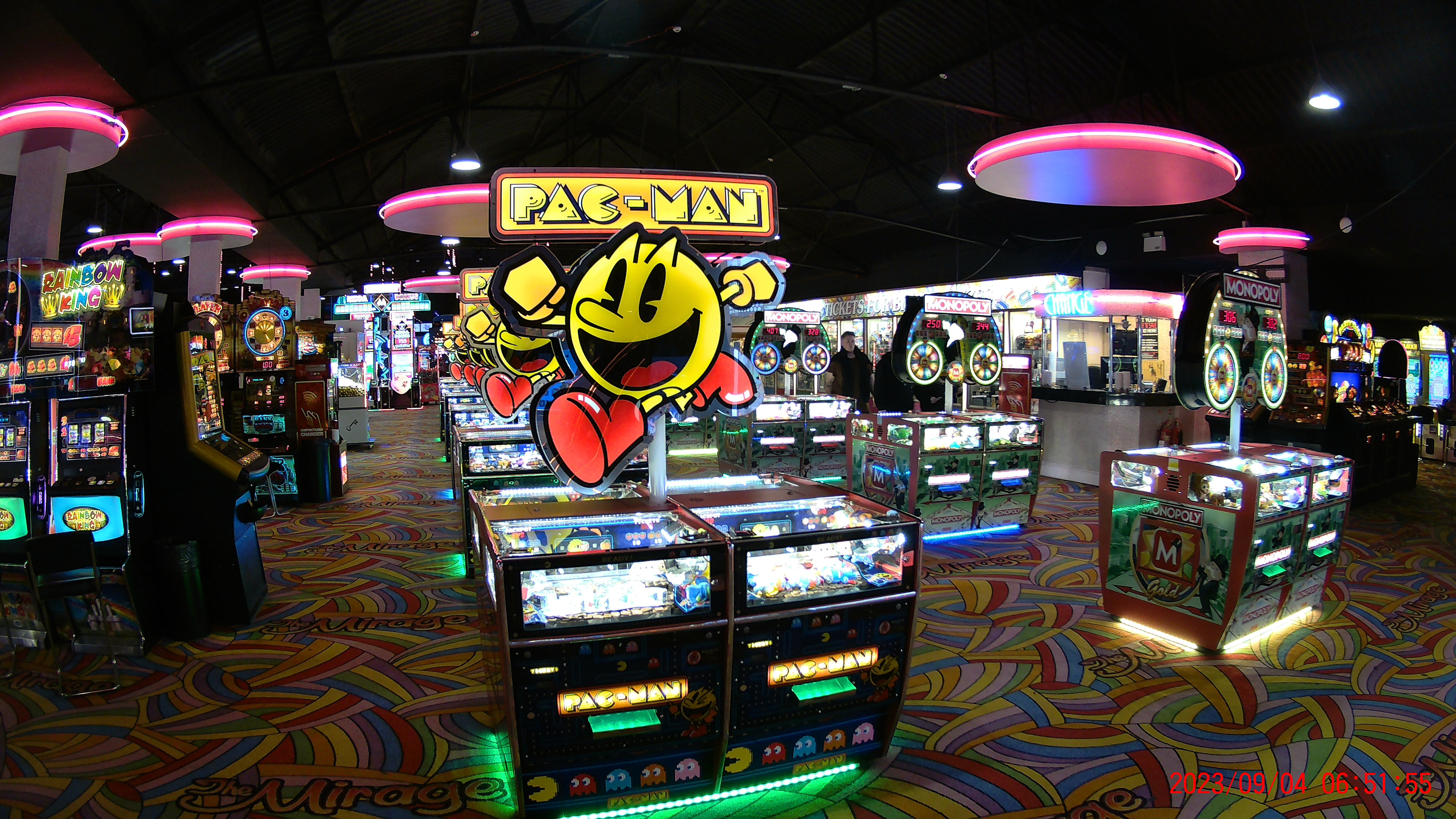
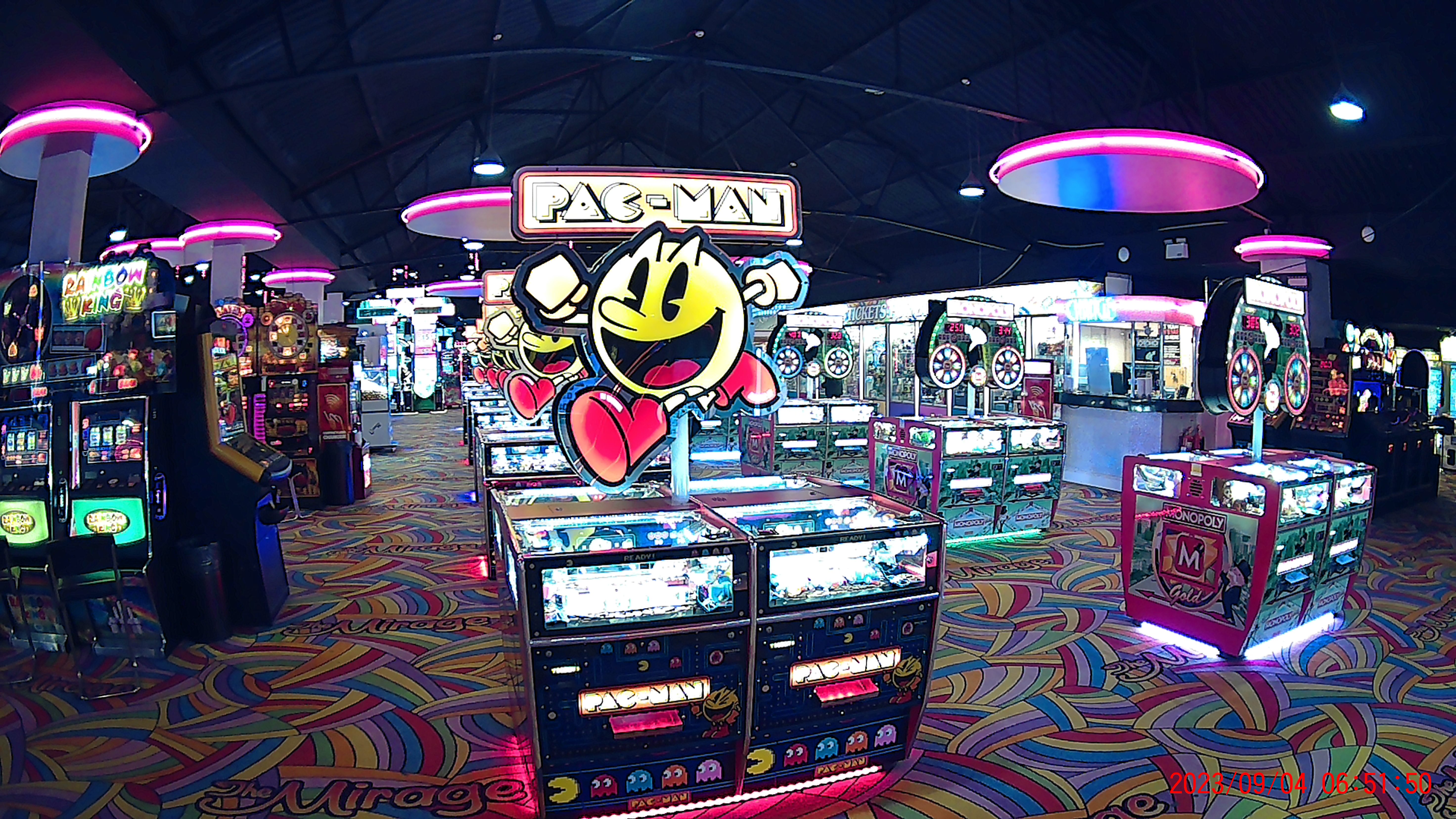
The camera can be controlled manually by hand or using the SJCAM Zone smartphone app. The main advantage of the app, as with any action camera, is simply that it gives you a remote Live View alongside wireless control of the camera. Connection using the camera’s QR code, which is scanned with the app, failed during testing, but manual connection did succeed, and worked perfectly well once the connection was established.
The 6-axis gyroscope stabilization works reasonably well for minor movements and facilitates smooth video capture. However, is doesn't compensate for larger movements as effectively as higher-end action cameras. When I shot some footage while riding a skateboard, the more vigorous movements of the camera as I pushed along with my foot were visible in footage, but when I was cruising the stabilization was effective.
When I was running, however, or even walking, a lot of shake can be seen, which is possibly jello, due to a slow shutter speed or a combination of the two. This is amplified during night capture with the night camera and produces video footage that is at best usable, but hardly smooth. The night video example on the SJCAM website looks much better, but it also looks like it was captured with the camera attached to a slow-moving bicycle, which would naturally result in smoother video footage.
Before shooting with the SJ20, I made a point of switching off the timestamp feature, which is switched on by default and adds the time and date to photos. It may have been that I didn’t commit to the change or that the camera reverted to its default, but the first batches of photos taken with the camera show the time and date. It would be much better if this was switched off by default, with the ability to switch it on if and when required, because most people don’t want their photos branded with a bright red time and date in the corner.
- Features and performance score: 2.5/5
SJCAM SJ20: image and video quality
- Video quality is mediocre
- Photos offer the best image quality
- Manual control not available
Alongside image adjustment controls such as contrast, saturation and sharpness, the only manual controls available for shooting are White Balance, ISO and EV (for exposure compensation), so camera control is essentially automatic rather than manual.
This is a shame, as manual control is preferable for video capture for many people, since it maintains consistency and allows you to select the exposure settings that work for you. The ISO and EV controls do allow this to a degree, but with no control over shutter speed or even the ability to see what it is, you never know if it’s too fast or too slow for the frame rate you’re shooting at, or to control motion blur, depending on the activity you’re capturing.
Photos offer the best image quality – images come in at 20MP and are captured in JPEG format. Noise reduction applied to JPEGs is obvious at higher ISO settings. The main camera, like most action cameras, produces the best results in bright light.
The night camera produces a brighter image in low light than the daylight camera, but the colors captured look much less natural, and certainly not as the naked eye sees them. Chromatic aberration can also be seen along high-contrast subject edges. Image quality from the daylight camera is fine, though and the 20MP resolution is decent for an action camera.
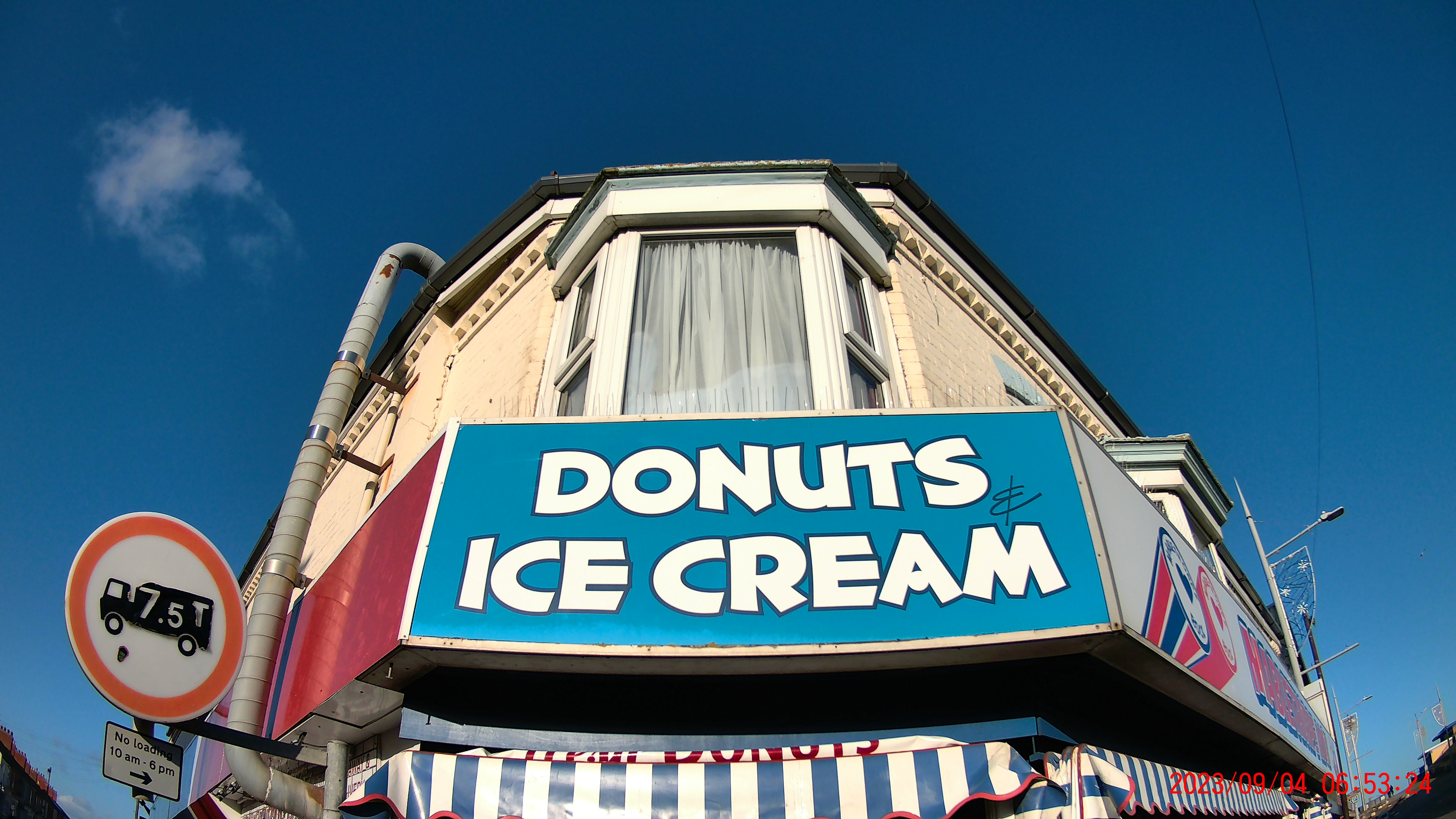

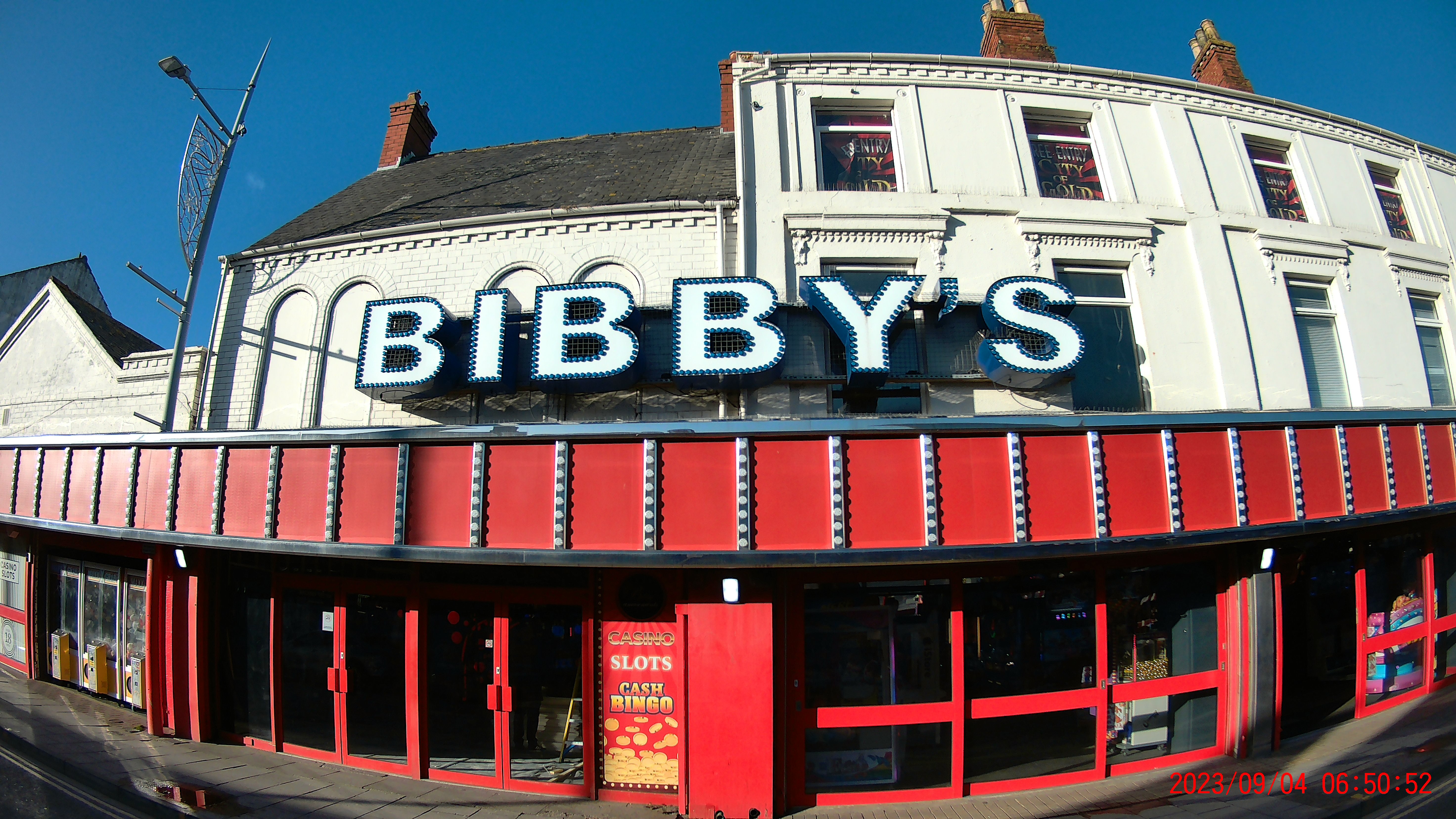
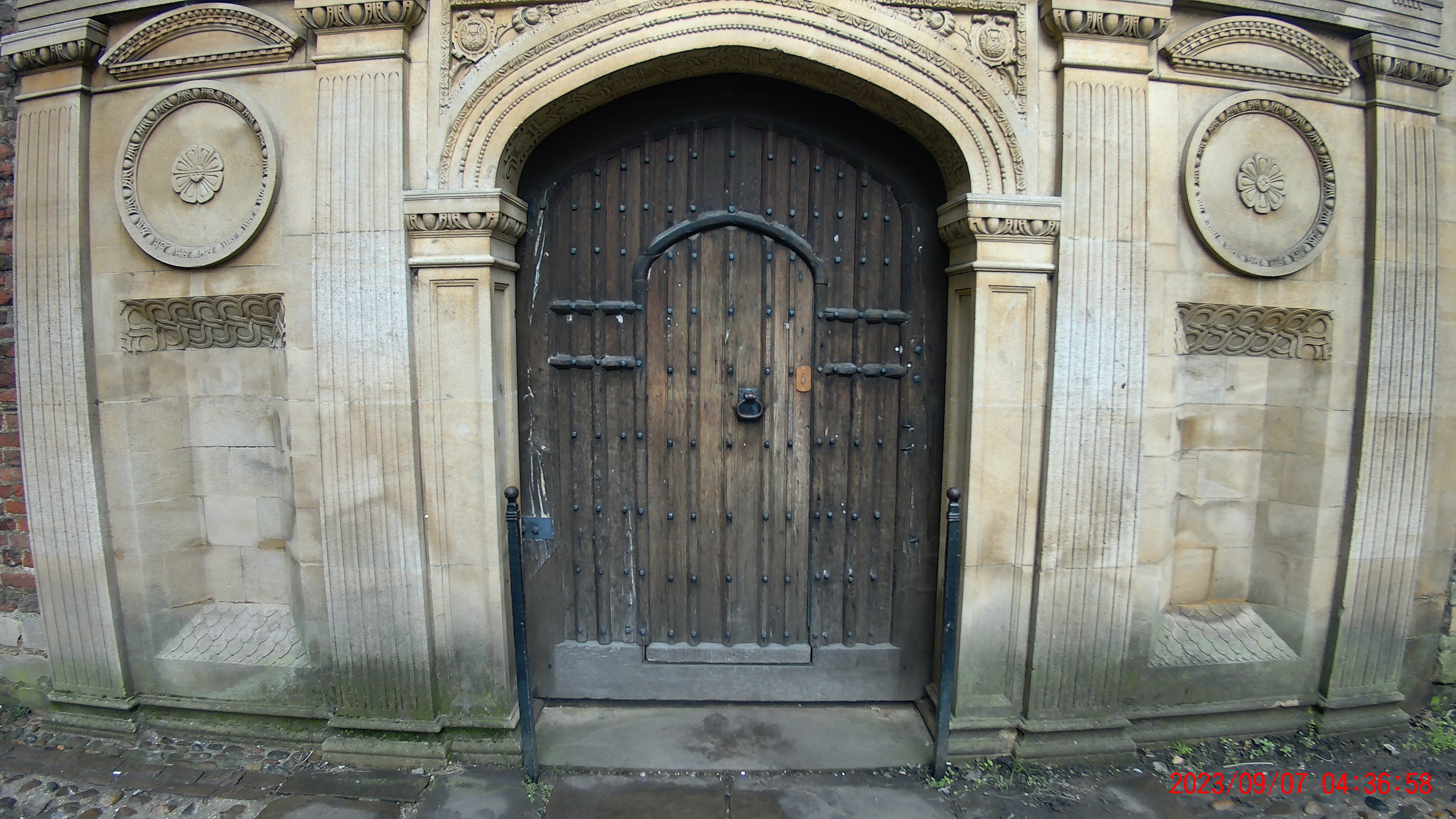


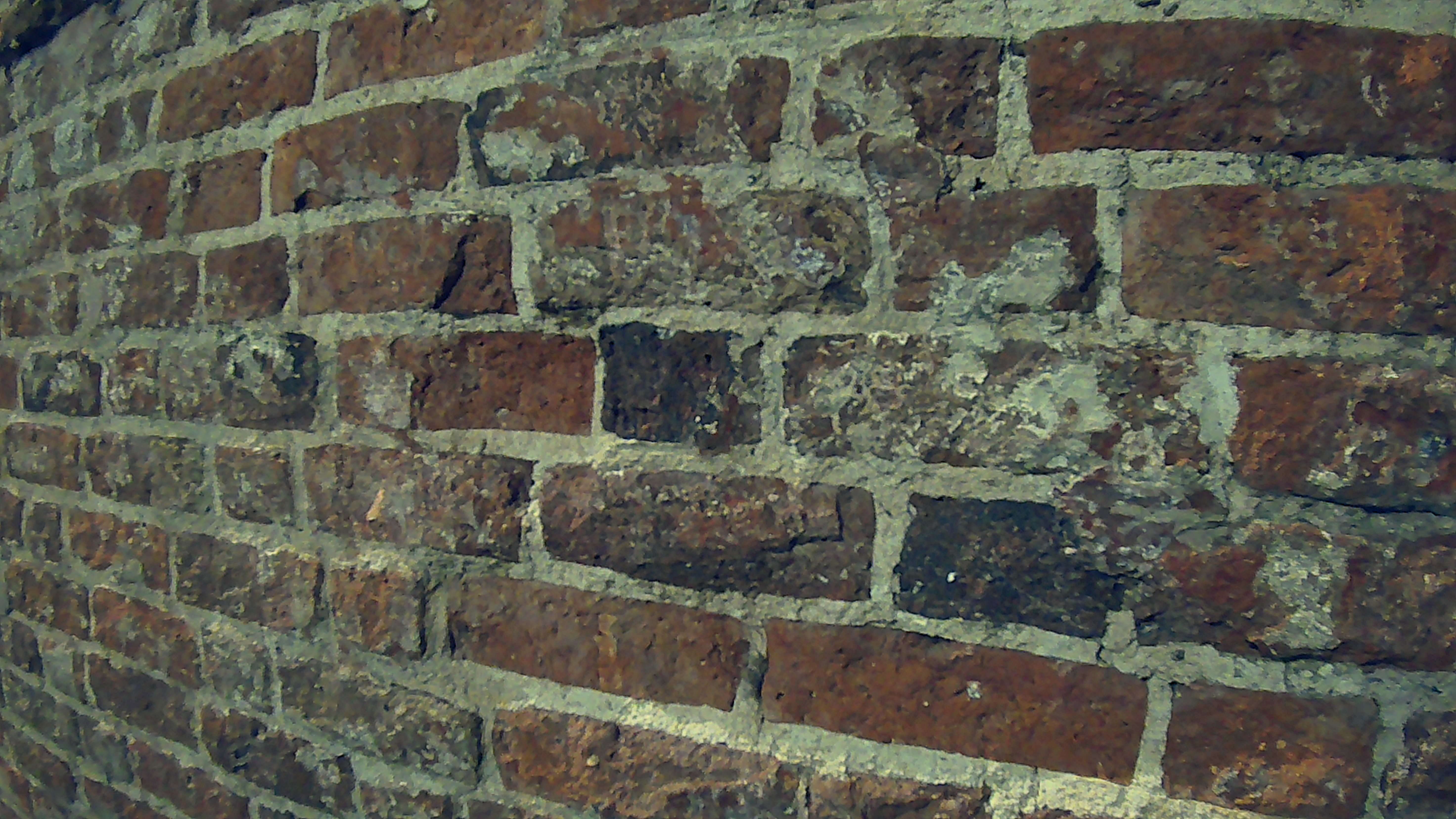
4K video
Video quality is below par from both the f/2.0 day camera and the f/1.3 night camera. Even in daylight, artifacts are visible in footage, and at night the captured image is far from clear, and certainly doesn’t live up to the claim that the SJ20 outperforms the GoPro Hero 12 for night shooting.
What the night camera does is create a bright image, but overall quality is poor. Plus, the lack of camera control and the shakiness of the image stabilization don’t help here. It’s a little odd really, because where an action camera should excel at moving video capture, this is exactly where the SJ20’s performance is at its weakest.
Timelapse video
The available specifications for the SJ20 are a little vague. We can see that the field of view of the two cameras is 154 degrees, but it's guesswork what the 35mm equivalent focal length of the lens is. SJCAM is also holding the sensor specs for the two cameras close to its chest, so we can only assume that alongside providing different apertures, the two cameras use different sensors.
They could be the same sensor with different processing algorithms, but with no access to this information it’s impossible to say for sure. But since the results from each camera are different in terms of color and exposure, it suggests that there are sensor and/or processing differences between the two.
Slow-motion video
- Image and video quality: 2/5
Should I buy the SJCAM SJ20?
Buy it if...
You’d like a unique action camera
With two cameras and two lenses, the SJ20 stands out from the crowd despite looking like a low-rent Insta360 One RS-clone design.
You prefer shooting in auto
If you prefer simply pointing and shooting when capturing photos and videos, the SJ20 provides ease of use that even beginners won’t find overwhelming.
You’re on a budget
The SJ20 is inexpensive, and comes in a comprehensive kit that includes a range of mounts for attaching the camera in different ways.
Don'y buy it if...
You have a larger budget
If you have more money to spend on an action camera you’ll get much better image quality, performance, and build quality from GoPro, DJI and Insta360 action cameras.
You want the best image quality
Image quality and stabilization are the SJ20's weak points, so if you want the best image quality possible you’ll need to consider a higher-end action camera.
You need manual camera control
Manual control is essential for capturing the best video footage possible, but the SJ20 is pretty much automatic, with just a couple of basic exposure controls.
Also consider
GoPro Hero 12 Black
Whether you’re considering buying your first action camera or upgrading from an older model, the GoPro Hero 12 Black is an option you should consider if your budget stretches that far. With great image quality, excellent stabilization and a streamlined user interface it’s one of the best action cams available. Low-light video performance isn’t fantastic, but neither is the SJ20's, despite its night camera.
Read our in-depth GoPro Hero Black review
DJI Osmo Action 4
Given DJI’s dominance in the drone market, branching out into action cameras was a natural evolutionary step, and the DJI Osmo 4 is a true GoPro alternative thanks to great image quality, impressive stabilization, great mounting options and an intuitive user interface. What’s more, if you use a DJI drone, video shot in the D-Log profile matches up perfectly for consistency.
Read our in-depth DJI Osmo Action 4 review
Testing scorecard
| Attributes | Notes | Rating |
|---|---|---|
| Price | Reasonably priced for a beginner action camera but expensive given the performance | 3/5 |
| Design | Clearly inspired by the Insta360 One RS but the build quality is only average | 2.5/5 |
| Performance | Easy to use, but this doesn’t compensate for by poor video quality and a lack of auto controls | 2.5/5 |
| Image and video quality | Photos look pretty good, but video quality is lacking | 2/5 |
How I tested the SJCAM SJ20
I carried the SJCAM SJ20 in my jacket pocket for over a week, so the camera was to hand whenever I needed it or wanted to try one of the many shooting modes on offer. I tested the photo and video quality of the day and night cameras at those respective times while walking, running, and skateboarding, to test both image quality and stabilization in a range of typical action camera scenarios.
The camera was used both independently and connected to my smartphone via the SJCAM Zone app to assess ease of use and the overall user experience. Action cameras are generally easy to use with intuitive interfaces, and I was able to find my way around the camera without the need to delve into the clear and easy-to-follow instruction manual.
First reviewed February 2024

James Abbott is a professional photographer and freelance photography journalist. He contributes articles about photography, cameras and drones to a wide range of magazines and websites where he applies a wealth of experience to testing the latest photographic tech. James is also the author of ‘The Digital Darkroom: The Definitive Guide to Photo Editing’.
